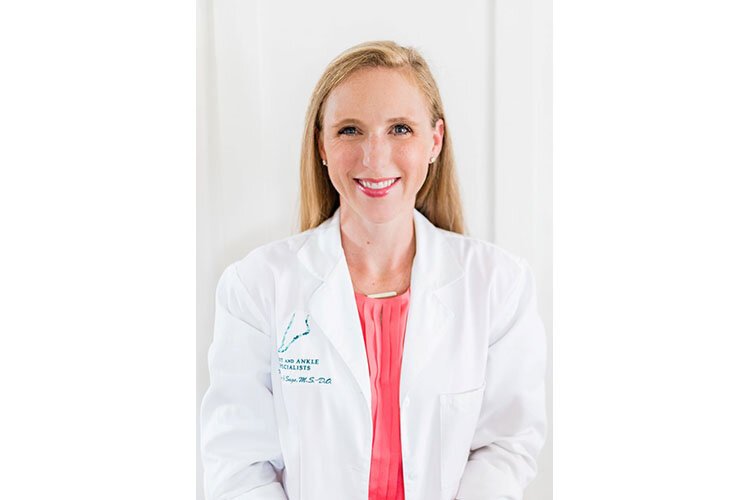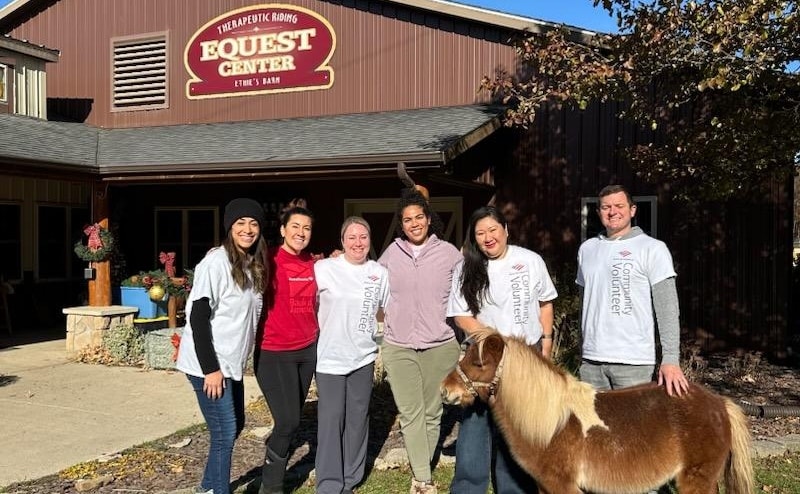RapidChat: Dr. Katherine Sage on life as a young physician
As an American Osteopathic Academy of Orthopedics (AOAO) emerging leader and Grand Rapids boomerang, Dr. Katherine Sage aims to bring a unique outlook and fresh ideas to the world of foot and ankle health, including community outreach, volunteering, and having choice in your health care systems, insurance companies, and physicians.

As an American Osteopathic Academy of Orthopedics (AOAO) emerging leader and Grand Rapids boomerang, Dr. Katherine Sage aims to bring a unique outlook and fresh ideas to the world of foot and ankle health, including community outreach, volunteering, and having choice in your health care systems, insurance companies, and physicians.
Rapid Growth: How long have you been practicing osteopathic medicine?
Katherine Sage: I started medical school in 2007, and graduated in 2011. So about 13 years overall!
RG: How did you land your position as the first Orthopaedic Surgeon to join Foot & Ankle Specialists of West Michigan?
KS: I am from Grand Rapids originally and knew I wanted to settle here to raise my family once I finished all of my training. I began looking at opportunities in the area and met the physicians at Foot and Ankle Specialists of West Michigan. I was interested in the position because it allowed me to practice full-spectrum Orthopaedics if I wanted, but also to specialize specifically in Orthopaedic Foot and Ankle Surgery. The group had a great reputation with several offices around West Michigan, so it felt like a perfect fit.
RG: What were you doing prior to this role?
KS: Before my current position at Foot and Ankle Specialists of West Michigan, I was in an Orthopaedic Surgery Foot and Ankle Fellowship program in Baltimore, MD. For the five years before that, I was an Orthopaedic Surgery resident here in Grand Rapids.
RG: What is it about feet and ankles that made you want to specialize in them?
KS: I love the variety of foot and ankle surgery. It can be anything from fractures or arthritis to conditions that people are born with or sports injuries. There’s such a variety. So every patient is different, every day at Foot and Ankle Specialists of West Michigan is different, and every surgery is different. I love that. Feet and ankles are obviously integral to walking and working and everyday life, so making them feel better and function properly is very rewarding. It’s a feel-good job.
RG: As an American Osteopathic Academy of Orthopedics (AOAO) emerging leader, what community services are you involved in outside of your work?
KS: I love this community and am always looking for ways to be involved with local projects. When I moved back to GR, one of the first groups I became involved with was the Metro Health impACT board. The board is part of the Metro Health Hospital Foundation and focuses on community outreach and volunteering. I also write a monthly column specifically on Women’s Health for Women’s Lifestyle Magazine.
There are so many health problems that affect women differently from men, and it’s important for women to recognize and take charge of their health. On a national level, I’m part of the Young Physicians Committee with the American Orthopaedic Foot and Ankle Society. As young physicians, we have a unique outlook and bring fresh ideas to the society. Right now, we’re working on a series of Podcasts for Orthopaedic residents about Foot and Ankle Surgery.
RG: What are some of the most common issues with women’s health you discuss?
KS: There have been some interesting studies in the Orthopaedic literature about how female athletes are injured differently from male athletes. For example, women tear their Anterior Cruciate Ligament (ACL) in the knee because of how the land after jumping. Because of those studies, young female athletes are now taught how to land while minimizing risk to the ACL. Additionally, bone density in women changes as they age, and fragility fractures or osteoporosis become more common in women. There are many examples of these differences across all the medical specialties.
RG: As a boomerang, what is your perspective on the healthcare industry within West Michigan?
KS: It’s certainly growing! Having choices in health care systems, insurance companies, and physicians is a good thing for the patient. University of Michigan partnering with Metro Health has brought many specialties to the area that were previously under-represented, and that’s an absolute benefit to the patients of West Michigan.
RG: What’s your favorite non-profit organization to work with outside of the healthcare industry?
KS: I have great respect for the Kids Food Basket, which is a local non-profit here in West Michigan. I would love to continue to become more involved!
RG: As we gear up for marathon season, what are the running injuries you typically see?
KS: For new runners, it’s starting too fast or going too hard too soon. Increasing mileage too quickly often results in knee pain, ankle pain or foot pain. Your body has to get used to a new exercise, so take it slow, expect a few aches and pains, and gradually increase. The same is true for seasoned runners – they need to remember to take their rest days. Midway through the season, I start to see stress fractures or other overuse injuries, which requires athletes to cut back or stop training completely if needed.
RG: What is your top piece of advice to runners to help prevent injuries?
KS: Again, ramp up training slowly. Wear reflectors at night if you’re training outside. Make sure you’re eating well and getting the nutrients you need. Don’t forget to spend time warming up and cooling down. And make sure you have good shoes.
Jenna K. Morton is the RapidChat correspondent for Rapid Growth Media.









